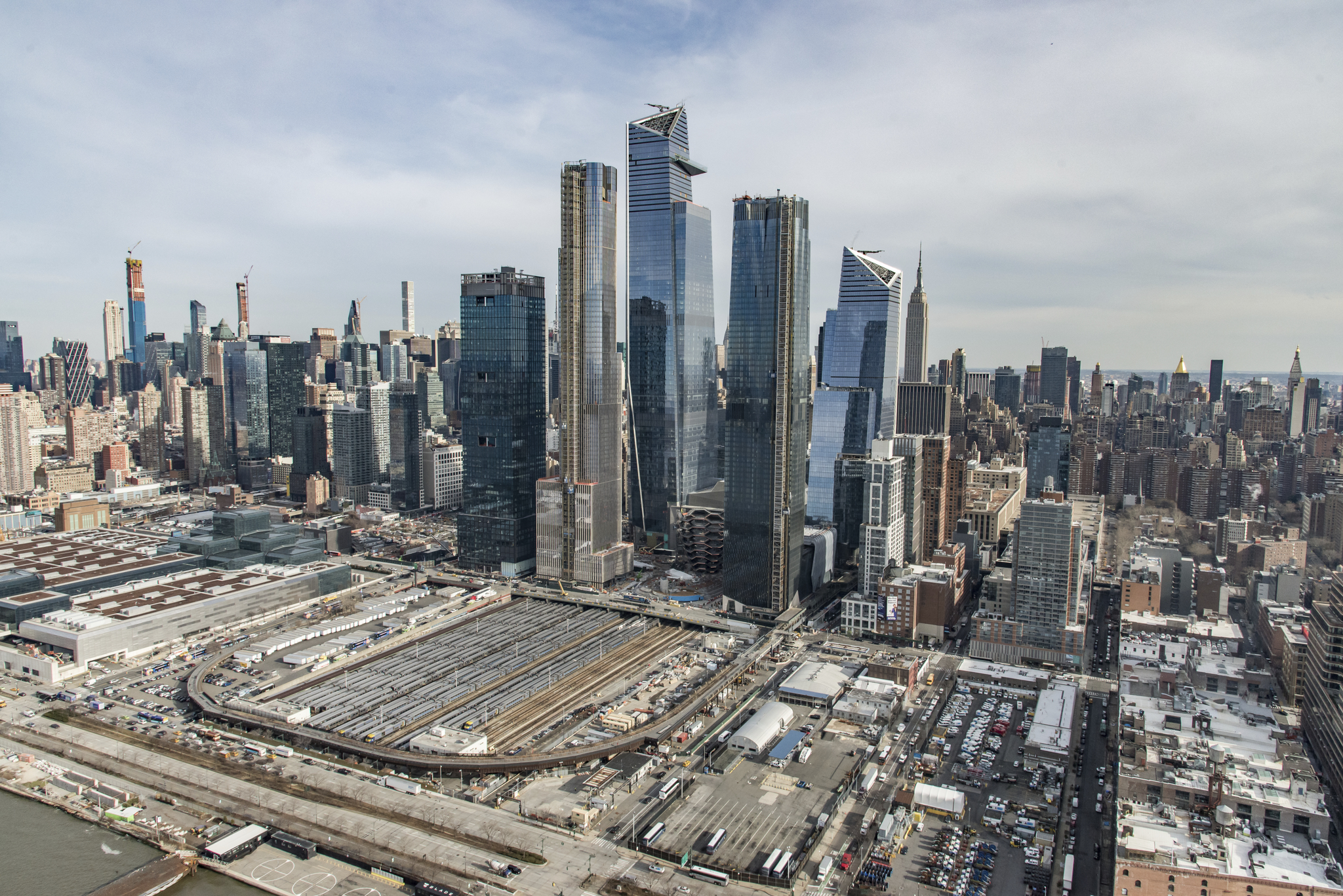Hudson Yards - the biggest real estate project in U.S. history
Hudson Yards, the new city within a city on Manhattan’s west side, is not due for completion until 2026, but is already open to the public as the largest privately-built real estate project in US history.
The 28-acre parcel of land overlooking the Hudson River is being developed by Related Companies and Oxford Properties Group, a team passionate about repurposing the once-industrial site ribbed with railroad tracks as they felt it was both an eyesore and not achieving its full potential.
Hudson Yards as seen from the Hudson River.
The $25 billion mixed-use community includes 15 acres of open space alongside 15 buildings, some of which are already in use while others are years away from completion. Every building is unique, and the tallest, 30 Hudson Yards, stands at 1,296 feet.
The shops and restaurants at Hudson Yards.
A civic space by Nelson Byrd Woltz sits above the rail yard, adding five acres of plazas and gardens to the development. Their work connects to the surrounding architecture both at ground level and above, and includes plants specifically chosen for the conditions at Hudson Yards.
Thomas Heatherwick’s Vessel is already open to the public. Arguably the centrepiece of the Hudson Yards development, the vertical park is made from 154 steel flights of stairs, and Heatherwick sees the three-dimensional public space as an extension of the High Line.
The Vessel is already open to the public.
Also already open at Hudson Yards is the Shed, a shape-shifting performing arts centre that can not only be made into different sizes of theatre and gallery, but can be transformed into an outdoor venue.
The Wall Street Journal ha described how Hudson Yards has been developed with sustainability and resilience in mind- firstly, in order to attract ecologically-sensitive Millennials, but also in response to extreme weather events such as hurricane Sandy. Sandy wrecked havoc on New York in 2012, flooding the Hudson and creating citywide blackouts. Therefore, all buildings in Hudson Yards have their mechanical systems elevated, and airtight doors to protect against storm surges.
Hudson Yards has its own natural gas power plant, heat exchangers for buildings, and its power system is designed to survive a blackout. Rainwater collection on site is able to recirculate more than 8 million gallons of water per year.
Hudson Yards’ website expresses a desire to “welcome residents and visitors to expansive open green space”, and despite being a business district, includes public infrastructure such as parks and a school.
The second phase of the development will stretch west to the West Side Highway, with the platform over that section of the rail yard yet to be built.
The Vessel on opening day in March.




